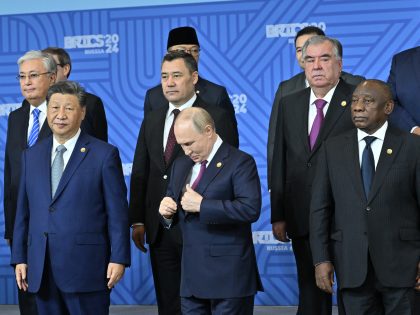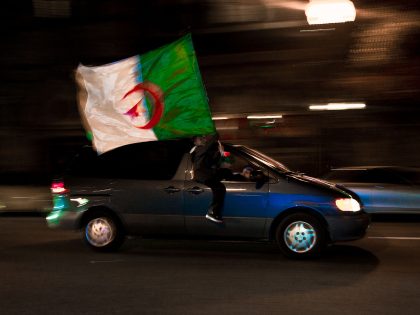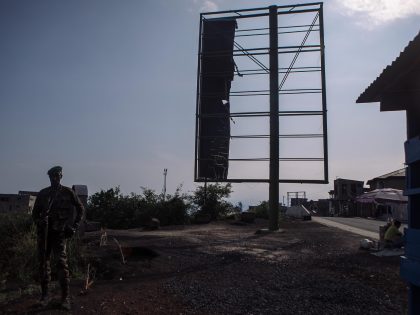Joe Slovo is still one of my heroes
Joe Slovo was a key leader of the armed and exiled resistance against Apartheid and one of the most visible white face of that movement.

Joe Slovo in the front. Pallo Jordan, another SACP and ANC leader, is in the background.
When I first learned about Joe Slovo in 1980s Apartheid South Africa, I assumed he must be Black since most white people at the time did not openly support the liberation struggle against Apartheid. My ignorance was not without reason. My working-class parents rarely spoke about the liberation movements—they were devout Christians by the 1980s, with little connection to the “struggle.” They were too focused on surviving and raising seven children to engage with anything beyond that. As a result, I had to seek out information about Slovo (1926-1995) and the broader liberation struggle on my own.
One reason I had to learn about Slovo on my own was the oppressive environment of censorship, especially regarding images, voice recordings, and visual representations of the jailed and exiled leaders of the liberation movements. Photographs of ANC leaders in prison or in hiding could not be published in newspapers or shown on TV until the late 1980s.
The first time a South African newspaper published an image of Nelson Mandela was in 1986 when the government allowed The Weekly Mail to feature him on its front page. The image had been taken before he was imprisoned at 45. By the 1980s, Mandela was already in his 70s. As we would later discover, more recent photos of Mandela did exist—taken on Robben Island and at Pollsmoor Prison—but they circulated only among security operatives.
There was also the infamous 1985 case in which Tony Heard, editor of the Cape Times, interviewed Oliver Tambo in London and published a direct quote from him in a story accompanied by a photo of them chatting. This act was considered illegal. The government issued numerous threats, and Heard risked up to three years in prison for publishing the interview.
It’s also important to note that the syllabi in our “History” courses at school made little or no reference to the liberation movement. If you learned about local resistance, it was usually about the brave Afrikaners and their leaders in their struggles against British colonialism. However, the 1980s were also a time of “mass democratic struggle,” and high schools were central to this strategy. We learned about or encountered sympathetic accounts of the exiled and banned movements like the ANC, SACP, and PAC through “alternative education”—sessions set up by boycott leaders or through independent publications like Grassroots, South, and Upbeat. Crucially, we also had student teachers coming from the University of the Western Cape to do their “practicals” at coloured schools, where they would help broaden our understanding of the struggle and the liberation movements.
But back to first encounters: I think someone at school passed around faded photographs of Nelson Mandela, Oliver Tambo, Walter Sisulu, and Joe Slovo. In some they were together. When a classmate pointed to the white man in the images and identified him as Joe Slovo, I confess I was shocked to learn that he was white. I had been shouting his name or singing songs containing it. Songs about Mandela, Tambo Sisulu, and, of course, a certain Joe Slovo were everywhere at the time.
Though whites were part of the “democratic” movement, they were sparse. By 1984, the United Democratic Front, which actively targeted whites to join the mass struggle, began to dominate internal resistance politics. However, the UDF was only one year old, and although a small number of committed whites were involved in the UDF, it was still in its early days. Movements like the End Conscription Campaign, which organized young white conscripts who refused to serve in apartheid’s army, would come later. The thing about Slovo, however, was that he was particularly singled out for vitriol and hate in the white media and the state mainly because he was the face of the Communist Party (apartheid ideology was very Christian) and, even more, because he was the leader of the ANC’s armed wing.
By the late 1980s, I began seeing more Joe Slovo images in South Africa’s mainstream media. It made sense. By then, South Africa’s apartheid government was unofficially negotiating with the ANC, and the press had become emboldened. Tony Heard was eventually fired by the Cape Times’s owners (I think for other reasons), but the alternative press was defiantly publishing images and statements of the ANC and the SACP. But when I first saw Slovo’s image, it was a revelation to me.
So, who was Slovo, and why was he so important to resistance history and to people like me?
The son of Jewish immigrants, Yossel Mashel Slovo first became involved in ANC and liberation politics in the 1950s when the resistance against Apartheid (then still a new policy) was organized on racial lines. Slovo came to the ANC via the Communist Party of South Africa. The CPSA was banned in 1950, and white communists formed what became known as the Congress of Democrats. They would fight alongside the ANC (representing black Africans), the Indian Congress, and the Coloured People’s Congress. During this time, Slovo was arrested, charged, and briefly jailed for “treason.” When the ANC decided to turn to armed struggle, embarking on a series of strategic bombings of government installations, he emerged as one of the leaders of its armed wing, Umkhonto weSizwe (Spear of the Nation). In 1963, he went into exile and, over time, also became general secretary of the Communist Party (now called the SACP) during its long exile. During this time, his first wife, Ruth First, was killed in a bomb attack in Maputo, Mozambique, by death squads of the South African dictatorship (in 1982). Slovo contributed to the ANC’s strategic thinking as head of the SACP, most notably the idea of a “two-stage revolution” (first political and then economic power).
When the ANC was unbanned, he played a leading role in negotiations (he should take credit for some of the compromises the ANC made in dealing with Apartheid’s army and civil service. Known as the “sunset clauses,” Slovo suggested the new government retain the top echelons of the civil service to secure a smooth transition. Though deemed necessary at that moment, not soon after, the white army and police generals were accused of undermining the new democracy from the start by spreading bogus rumors of a left-wing coup or fomenting third-force violence or proxy wars.
Finally, Slovo served as the country’s first housing minister of the democratic era. His record was mixed, but by then he was dying of cancer.
Some samples of Joe’s insights, which are still relevant today:
“It’s not difficult in South Africa for the ordinary person to see the link between capitalism and racist exploitation, and when one sees the link one immediately thinks in terms of a socialist alternative.”
…
“Sometimes, if you wear suits for too long, it changes your ideology.”
…
Since race discrimination is the mechanism of this exploitation and functional to it, since it is the modus operandi of South African capitalism, the struggle to destroy ‘white supremacy’ is ultimately bound up with the very destruction of capitalism itself. It is this interdependence of national and social liberation which gives the South African revolutionary struggle a distinctive form and shapes the role of the various classes within the dominant (minority) and subordinated majority.
National liberation in its true sense must therefore imply the expropriation of the owners of the means of production (monopolised by a bourgeoisie drawn from the white group) and the complete destruction of the state which serves them. There can be no halfway house.



















